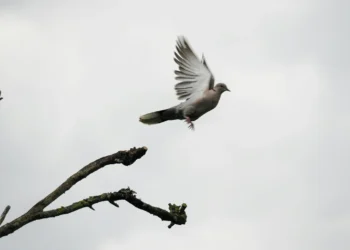The Kadena Air Base in Japan hosted the largest recent U.S. “Elephant Walk,” showcasing joint-service airpower with over fifty aircraft and missile systems, reinforcing unity in the Indo-Pacific.
The United States military has increasingly employed “elephant walks” to show off its aerial capabilities and as a training tool to ensure combat readiness. The most recent demonstration of “regional deterrence” occurred at Kadena Air Base earlier this week, when the 18th Wing assembled “one of the most diverse formations of U.S. military aircraft in the Indo-Pacific.”
The base, located on Okinawa and known as the “Keystone of the Pacific,” conducted a joint elephant walk that included U.S. Air Force and U.S. Navy aircraft that regularly operate from the facility, along with U.S. Army MIM-104 Patriot air-defense missile batteries.
According to the base, it highlighted “the strength of America’s integrated air and missile defense and its commitment to joint operations.”
The first Elephant Walk occurred during the Second World War, when large fleets of Allied bombers massed for attack. Observers on the ground noted that as the aircraft lined up, they resembled the nose-to-tail formations of elephants walking to a watering hole.
Since then, military elephant walks have been routinely conducted as a show of force and operational strength. The U.S. Air Force employs elephant walks to show a unit’s capability and the teamwork required to perform such an operation. If needed, they can also help pilots prepare for the launching of fully armed aircraft in a mass event.
The Largest “Elephant Walk” in History Hosts Diverse Array of Fighter Aircraft
This week’s formation at Kadena included twenty-four U.S. Air Force F-35A Lightning IIs, eight F-15E Strike Eagles, six HH-60 Jolly Green IIs, two MQ-9 Reapers, two MC-130J Commando IIs, six KC-135 Stratotankers, an RC-135 Rivet Joint, and an E-3 G Sentry; along with two U.S. Navy EA-18 Growlers, a P-8 Poseidon, and two U.S. Army MIM-104 Patriots.
It was among the largest elephant walks in recent memory, topping even the fifty-two aircraft formation at Hill Air Force Base (AFB), Utah, in 2020.
“The diversity of capabilities is a testament to the lethality Kadena AB can leverage to deter adversarial aggression in the Indo-Pacific region,” Kadena AB explained.
“Working alongside our allies and partners, Kadena stands ready to project airpower throughout the region to ensure a free and open Indo-Pacific,” said Brig. Gen.Nicholas Evans, 18th Wing commander.
While it was an overwhelming display of power, it also required no shortage of coordination and support from servicemembers, where any inter-service rivalry doesn’t exist.
“An elephant walk like this sends a message you can’t ignore, it shows our Airmen, allies, and adversaries that we’re united, capable, and ready,” said Chief Master Sgt. Brandon Wolfgang, 18th Wing command chief master sergeant.
“This kind of teamwork and presence is precisely how we maintain deterrence in the Indo-Pacific.”
The “Elephant Walk” Is a Popular Way for the U.S. to Show Air Power
Even as the U.S. military has increased the frequency of elephant walks, it is important to remember that no two are exactly alike and that each requires a high level of coordination.
Earlier this year, the U.S. Air Force performed another display of strength in the Cope Tiger 25 joint exercises with an “international elephant walk” that included warbirds from three different air forces.
The aircraft were F-16 Fighting Falcons, Saab JAS-39 Gripens, Northrop F-5E Tiger IIs, KAI FA-50 Golden Eagles, F-15SG Eagles, and Airbus A330 MRTT tankers.
In February, two dozen Lockheed Martin F-22 Raptors from the 1st Fighter Wing also took part in an elephant walk at Langley AFB, Virginia, one of the largest involving the fifth-generation air superiority fighters.
This week’s elephant walk at Kadena is also the second this year, following another in January that included nine KC-135 aerial refueling tanker aircraft.
About the Author: Peter Suciu
Peter Suciu has contributed over 3,200 published pieces to more than four dozen magazines and websites over a thirty-year career in journalism. He regularly writes about military hardware, firearms history, cybersecurity, politics, and international affairs. Peter is also a Contributing Writer for Forbes and Clearance Jobs. He is based in Michigan. You can follow him on Twitter: @PeterSuciu. You can email the author: [email protected].
Image Courtesy of the U.S. Air Force
















